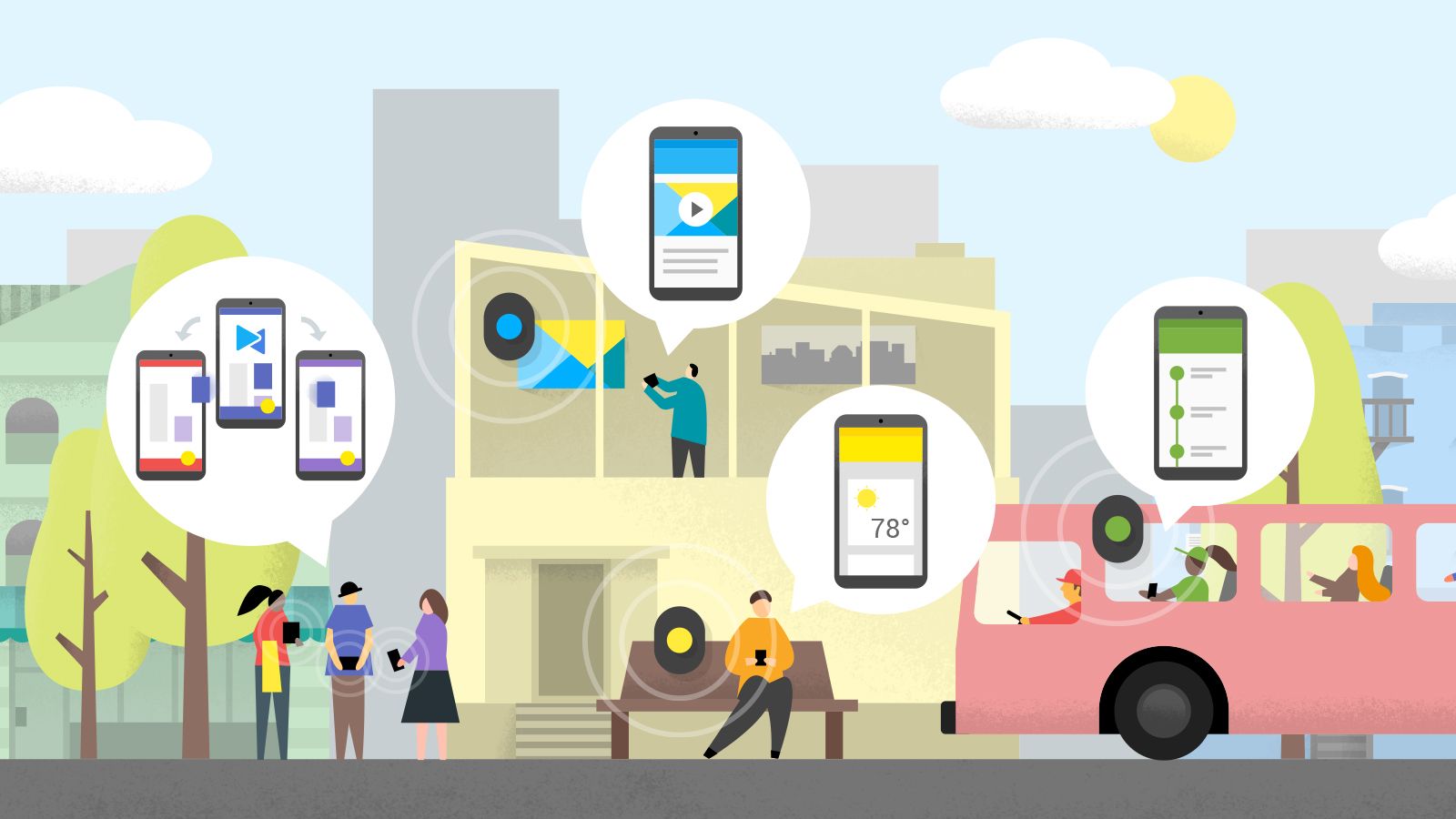Google is finally going after Apple's iBeacon technology with something called Eddystone.
Although it has been a couple years since Apple introduced iBeacon, Google has just decided it was the right time to unveil its own alternative solution for piping contextual, location-based info through beacons to mobile apps.
And it works with all sorts of devices. Not just Android phones.
What is iBeacon?
Apple subtly introduced iBeacon as part of iOS 7 at WWDC 2013. It essentially made way for new range of apps and functions. With it, stores pipe coupons to your phone, mapping apps offer indoor navigation, and more. The technology basically allows mobile apps to recognise when an iPhone is near small wireless sensors called "beacons".
Apple however has dubbed them "iBeacons" - as long as they support its iBeacon technology in order to transmit data to an iPhone (and visa versa). Most beacons are low-energy, battery-friendly hardware that rely on Bluetooth Low Energy to transmit data (BLE). They figure out a user’s location and deliver relevant information based on that location.
Let's put this into a scenario: Say you own an iPhone 6 and walk by a Starbucks that has an iBeacon. When you enter the beacon's zone, it will transmit special promotions, coupons, or recommendations to your iPhone via the Starbucks app. iBeacons also accept payments - without having to bump or tap your phone against anything.
What is Eddystone?
Google has just announced its version of iBeacon technology. Called Eddystone, it is an open-source standard that uses the Bluetooth Low Energy beacon format. The idea is that any app developer - not just iOS or Android app developers - can use it to pipe location-based content from compatible beacons to users’ smartphones.
The key thing to remember is that Eddystone is platform-agnostic (unlike iBeacon, which only works with iPhones). It’s therefore capable of supporting Android, iOS, or any platform that supports BLE-based beacons. Google said it set out to build a "new class of beacons that addresses real-life use-cases, cross-platform support, and security."
With Eddystone, developers will be able to come up with more apps that provide precise location and contextual cues. They could develop an app that surfaces transit times whenever a user walks by train station, for instance, or a museum app can provide background on the exhibit you’re standing nearby. The possibilities are endless.
There are two location options available with Eddystone. Developers can use one API that will allow their apps to find and ping a nearby beacon or another for when you visit a specific location. Eddystone can also send URLs to a user's phone.
When will Eddystone beacons be available?
Google said it is already using beacons to improve its own apps and services. Google Maps launched beacon-based transit notifications in Portland earlier this year, for instance, and that's supposedly helping people get faster access to real-time transit schedules for specific stations. Google Now will also use it to show contextual information.
Gogole Now might surface a card with menu items when you’re inside a restaurant. Google said Eddystone is available for interested companies now, and that existing Bluetooth beacons can begin supporting it with a firmware update.
Want to know more?
Watch the video above and check out Google's blog post for more details.

